- europages
- >
- COMPANIES - SUPPLIERS - SERVICE PROVIDERS
- >
- pharmaceuticals
Results for
Pharmaceuticals - Import export
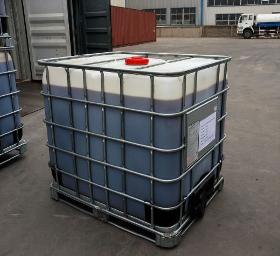
OEN CHEMICALS GMBH
Austria
Chemical appearance Alky Hydroxamic Acid has a pretty dark red colour appearance. It also comes in a thick liquid form which has no strong kind of odour. It has the tendency to solidify when exposed to temperatures which are lower than 15 ºC. Chemical application and strength Alkyl Hydroxamic Acid or Alkyl Hydroximic Acidis a very good collector and flotation agent with oxidized sulfide and different metallic oxides, even ones which are very difficult to extract by other collector agents. It has a strong collection power with wolframite, copper oxide ores, titanic iron, hematite, niobium ores, and many more. It can strongly extract various non-ferrous metals. In alkaline conditions, Alkyl Hydroxamic Acid is a strong floater of fine cassiterite It should be placed in an environment away from exposure to water and extreme heat from fire and sunlight. If placed in a very cold confinement, it has the tendency to solidify.
Request for a quote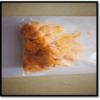
OEN CHEMICALS GMBH
Austria
Octyl Hydroxamic Acid is an organic compound. Hydroxamic acids are a class of organic compounds. They have the functional group RC(O)N(OH)R’ where R and R’ are organic residues and CO is the carbonyl group. They are amides. They are used extensively for the flotation of rare earth minerals during concentration and extraction of ores. Octyl Hydroxamic Acid is a very useful chemical compound which is made by the reaction of esters or acid chlorides with hydroxylamine salts. Its chemical formula is C9H19NO2. Chemical Appearance Octyl Hydroxamic Acid has the appearance of a dark yellow coloured solid. It has no distinct odour. It is readily soluble in water and also in alkaline solutions. It has a pH level between 10 to 13. Chemical Applications and Strengths Octyl Hydroxamic Acid or N-Hydroxynonanamide is an extremely useful chemical compound and therefore, has many industrial applications. Its main applications and strengths
Request for a quote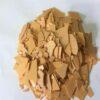
OEN CHEMICALS GMBH
Austria
Chemical Appearance Sodium Hydrosulfide NaHs is usually in the form of Yellow Flakes. Sodium hydrosulfide can also be in a solution form and appears as a colorless to light-yellow liquid. Chemical Applications NaHs main uses are in manufacturing as a replacement chemical for sulfur, as a flotation agent in copper mining where it is used to activate oxide mineral species and other various industries such as: Mining and mineral processing Tanning industry Dye industry Fertilizer industry Water treatment Manufacture of other chemicals e.g. ammonium sulphide Our sodium hydrosulfide maintains the highest quality standards required in the international market. With ISO 90001 manufacturing, we ensure high quality inputs and process to result in quality NaHS. Our clients mainly use NaHS for flotation of copper minerals. We have clients in Southern Africa, South America, Southeast Asia and other places.
Request for a quote
OEN CHEMICALS GMBH
Austria
Chemical appearance: Sodium ethyl xanthate or SEX is typically a yellowish powder or pellet that is soluble in water. It is a xanthate based on the C2 alkyl ethyl alcohol in the sodium salt form. Chemical application and strengths: Sodium ethyl xanthate or SEX is used in mining as a flotation agent. It is used as a collector and xanthate used especially in copper mines. It can be used for flotation of various minerals that are activated or hydrophobic and float easily such as lead, cobalt, zinc and nickel. It can form insoluble compounds with these metallic ions. Sodium ethyl xanthate is especially important in in froth flotation, where it is used to separate hydrophobic materials from hydrophilic. In mining this is an important operation to recover sulfide ores. For ores such as copper, this process lowers the costs of recovering low grade ores and can save mining companies processing costs. SEX is used a highly selective collector and is the strongest among the xanthates.
Request for a quote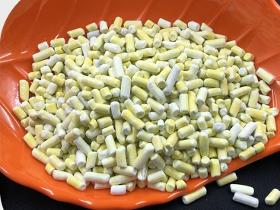
OEN CHEMICALS GMBH
Austria
Chemical appearance: Sodium ethyl xanthate or SEX is typically a yellowish powder or pellet that is soluble in water. It is a xanthate based on the C2 alkyl ethyl alcohol in the sodium salt form. Chemical application and strengths: Sodium ethyl xanthate or SEX is used in mining as a flotation agent. It is used as a collector and xanthate used especially in copper mines. It can be used for flotation of various minerals that are activated or hydrophobic and float easily such as lead, cobalt, zinc and nickel. It can form insoluble compounds with these metallic ions. Sodium ethyl xanthate is especially important in in froth flotation, where it is used to separate hydrophobic materials from hydrophilic. In mining this is an important operation to recover sulfide ores. For ores such as copper, this process lowers the costs of recovering low grade ores and can save mining companies processing costs. SEX is used a highly selective collector and is the strongest among the xanthates.
Request for a quote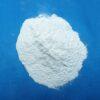
OEN CHEMICALS GMBH
Austria
Sodium Dichloroisocyanurate (SDIC) is an extremely efficient chemical compound and therefore, has many industrial applications. Its main applications and strengths are: It is used as an industrial water disinfectant. It is used in the drinking water production industries as a disinfectant. It is used to sterilise and disinfect swimming pools. It is also used as a fabric finishing agent. It can be used for the disinfection of public and private places like hospitals, homes, and hotels etc. It can be used to prevent wool from shrinking. It is used for disinfection and environmental sterilisation in livestock, poultry, and fish raising. It can also be used to prevent paper from decaying. Furthermore, it is also used for bleaching textiles. It is used in the breeding industry and aquaculture too.
Request for a quote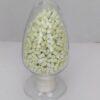
OEN CHEMICALS GMBH
Austria
Chemical Appearance Sodium Amyl Xanthate (SAX) is a sightly yellow or grey yellow powder or pellet. It is soluble in water and decomposes easily in the presence of acid and heat. It has a very pungent odour. Chemical Applications and Strengths Sodium Amyl Xanthate (SAX) is an extremely efficient chemical compound and therefore, has many industrial applications. It is most widely used as a very strong collector in the mining industry. Its main applications and strengths are: It is used as a collector in the mining industry. Collectors are chemicals that selectively attach to the surface of the mineral, making the mineral hydrophobic. Hydrophobicity is necessary for air bubble attachment in the precious metal extraction processes. Sodium Amyl Xanthate is the most powerful collector among the xanthates. It is extensively used in the flotation process of sulfide ores.
Request for a quote
OEN CHEMICALS GMBH
Austria
Chemical appearance: Potassium Amyl Xanthate (PAX) is available in the form of yellowish or pale-grey crystals or in the form of free-flowing powder in the purest state. PAX is also available in the form of a solution. PAX is highly water-soluble and emits a slightly unpleasant odor that is similar to that of carbon disulfide or that of decaying cabbage. Another property of PAX is the absorption of moisture from air i.e., hygroscopic nature. Chemical application and strengths: The properties of PAX as a Xanthate make it the ideal collector for various nonferrous metallic ores. Potassium Amyl Xanthate is the perfect choice for flotation processes of nonferrous metallic ores as a strong yet non-selective collector. PAX works effectively as a flotation reagent in the flotation of oxide minerals such as oxidized sulfide, lead, and copper ores. PAX is also a popular flotation collector for copper-nickel sulfide and auriferous pyrite
Request for a quote
OEN CHEMICALS GMBH
Austria
Chemical appearance Methyl Isobutyl Carbinol or 4 – Methyl – 2 – Pentanol has a very clear appearance which is similar to that of alcohol and comes in a liquid form which produces a slight distinct odour which is also similar to alcohol. Chemical application and strength Methyl Isobutyl Carbinol or 4 – Methyl – 2 – Pentanol is a kind of chemical compound which is organic and is derived from acetone. In the mining industry, MIBC is popularly used as a frothing agent during the flotation processes of different minerals and also when producing additives of lubricant oils. Compared to other frothing agents, MIBC has a great selectivity and fast kinetics in the flotation process. It produces froths with are dry yet easy to break which increases the efficiency and yield of the mineral. Has little to none collector resistance and used widely in the processing of gold ores. Acts as a solvent in the extraction process of essential oils which are used in fragrances.
Request for a quote
OEN CHEMICALS GMBH
Austria
Chemical appearance: Sodium cyanide is found either in the white crystalline form or in the form of granular powder. It is also water-soluble and forms a clear and colorless aqueous solution. Chemical application and strengths: The most important application of sodium cyanide is evident in the extraction of gold. The use of sodium cyanide is still the best method for mining gold. Sodium cyanide is a common agent in the leaching process for the majority of gold extraction operations. The primary reason for the use of Sodium cyanide in the extraction of gold is the higher affinity of gold towards cyanide. Sodium cyanide separates gold through oxidizing it and dissolving gold in the presence of oxygen and water. The most important strengths of sodium cyanide in the mining of precious metals are reflected in its cost-effectiveness, higher availability, and better processing
Request for a quote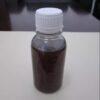
OEN CHEMICALS GMBH
Austria
Chemical appearance Alky Hydroxamic Acid has a pretty dark red colour appearance. It also comes in liquid form which has no distinct odour. It has a pH level of 10 to 13. Chemical application and strength Sodium Alkyl Hydroxamic Acid or Sodium Alkyl Hydroximic Acid is a very good collector and flotation agent with oxidized sulfide and different metallic oxides, even ones which are very difficult to extract by other collector agents. It has a strong collection power with wolframite, copper oxide ores, titanic iron, hematite, niobium ores, and many more. It can strongly extract various non-ferrous metals. In alkaline conditions, Alkyl Hydroxamic Acid is a strong floater of cobalt and copper. It should be placed in an environment away from exposure to water and extreme heat from fire and sunlight. If placed in a very cold confinement, it has the tendency to solidify. It is easily soluble in water and also in alkaline solutions.
Request for a quote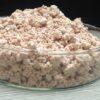
OEN CHEMICALS GMBH
Austria
Chemical appearance Salicyl Hydroxamic Acid has a pinkish orange colour and comes in powder form. It is chemically stable and has a subtle distinct odour. Chemical application and strength Salicyl Hydroxamic Acid or Salicyl Hydroximic Acid when used with iron, tin tungsten, copper, and various rare earth materials will be able to create stable chelate. In contrast, if it is used along with alkali earth metals and various alkali metals it will create unstable chelate. In conclusion, Salicyl Hydroximic Acid (SHA) has a very strong selectivity. If used with tin, it will be able to produce different complex salts, which proves its excellent selectivity towards tin. It is easily soluble within water and also in aqueous alkali solutions. In the flotation process, P86 is always partnered with SHA when extracting tin. Salicyl Hydroximic Acid (SHA) also has excellent frothing ability. Because of its characteristic of low toxicity, it is safe to use within any environment.
Request for a quote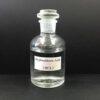
OEN CHEMICALS GMBH
Austria
Chemical Appearance Hydrochloric Acid 33% (HCl 33%) is a colourless transparent liquid. It is an aqueous solution of hydrogen chloride. It is a strong and highly corrosive acid which has a distinctive pungent odor. It is water and alcohol soluble but insoluble in hydrocarbons. It is an extremely important industrial chemical. Chemical Applications and Strengths Hydrochloric Acid 33% (HCl 33%) is an extremely efficient chemical compound and therefore, has many industrial applications. Its main applications and strengths are: It is used in the stimulation of petroleum wells. Stimulation process involves the removal of rust, scales, and undesirable carbonate deposits in oil wells. This enhances the flow of crude oil or gas to the wells. It is used in the manufacture of dyes, phenols, and plastics It is used to produce chemical intermediates like FeCl3, ZnCl2, AlCl3 and many more. It is used as a cleaning agent for household, commercial, and industrial purposes.
Request for a quote
AGRANA STARCH
Austria
AGRANA offers a range of products for the pharmaceutical industry: - Powder for medical latex products - Excipients and carrier substances for tablets, pills and sugar-coated tablets (native starches) - Maltodextrin, (dried) glucose syrups and dextrose
Request for a quote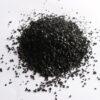
OEN CHEMICALS GMBH
Austria
Chemical appearance: Activated Carbon is the general name assigned for a group of porous carbons. The appearance of activated Carbon depends considerably on the process used for the activation of Carbon. Chemical application and strength: The primary application of granular activated carbon mesh is evident in the process of cyanidation. Cyanidation is the metallurgical process for mining gold from ore that contains cyanide. The use of physical activation involves hot gases either through carbonization or oxidation. Granular activated Carbon has an appearance just like the name indicates with the higher surface area for adsorption. Activated Carbon is produced from sources enriched in Carbon. Therefore, the surface structure of activated Carbon is very porous, and it also has a vast surface area. The large surface area with porous structure and attraction forces help in capturing material components that could be recovered later.
Request for a quote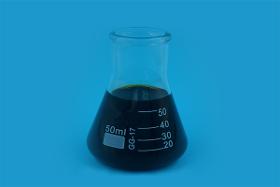
OEN CHEMICALS GMBH
Austria
Chemical appearance CC 903 has yellowish dark brown colour and come in an oily liquid form. It is not soluble in water but is soluble in specific organic solutions like alcohol. Chemical application and strength CC 903 is a new type frothing agent. These types of frothers are often used by mining companies in the flotation process of lead, zinc, copper, non – sulfide ores, sulfide ores, and many more. Key features include: Soluble in various organic solutions and has low toxic levels. It is flammable and a pine oil odour. A powerful frothing agent of non-ferrous metals which are accompanied by silver, non-metal ores, and gold. Its froth is very persistent and stable which has a great flow. It has a lower dosage than that of Pine oil. CC 903 has a better frothing ability than that of the CC 904 and both have some collection powers. They are often used in the collecting process of sulphur, talc, graphite, molybdenite, and many more.
Request for a quoteDo you sell or make similar products?
Sign up to europages and have your products listed

OEN CHEMICALS GMBH
Austria
Chemical appearance: Sodium Bisulfite 99% is a chemical compound created by bubbling sulfur dioxide through a solution of sodium carbonate in water. It appears solid white in color with a crystalline or granular texture. Sodium bisulfite also emits a slight sulphurous odor. It is not soluble in water and decomposes at its melting point i.e. 180C. Chemical application and strengths: Sodium bisulfite is a reliable leaching agent for cyanide detoxification in gold mining. Sodium bisulfite is used for detoxification of process leach residues along with air before discharging to the leach residue ponds. Sodium bisulfite serves as the ideal choice for leaching agent in gold mining despite the various doubts and confusion regarding suitable cyanide detoxification agents. Sodium bisulfite also finds applications for clearing oxidative corrosion in large piping systems.
Request for a quote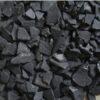
OEN CHEMICALS GMBH
Austria
Chemical appearance: Activated Carbon is the general name assigned for a group of porous carbons. The appearance of activated Carbon depends considerably on the process used for the activation of Carbon. The product is typically charcoal black with varying mesh sizes. Chemical application and strength: The primary application of granular activated carbon mesh is evident in the process of cyanidation. Cyanidation is the metallurgical process for mining gold from ore that contains cyanide. The use of physical activation involves hot gases either through carbonization or oxidation. Granular activated Carbon has an appearance just like the name indicates with the higher surface area for adsorption. Activated Carbon is produced from sources enriched in Carbon. Therefore, the surface structure of activated Carbon is very porous, and it also has a vast surface area.
Request for a quote
OEN CHEMICALS GMBH
Austria
Product Overview Chemical appearance Amino Dithiophosphate or Thiophosphoric Acid containing nitrogen comes in powder form which has a white to light yellow appearance. It has no strong distinct smell and can be dissolved in alcohol. It also has a density of 0.8 to 0.85. Chemical application and strength Amino Dithiophosphate or Thiophosphoric Acid containing nitrogen is a very good collector agent of various non-ferrous sulfide minerals like lead, silver, copper, and zinc (activated) sulfide ores. It can be used in the activation process of pyrite flotation. A very strong collector agent compared to other Dithiophosphates. Commonly used in the flotation process of copper and lead minerals under the presence of iron and sphalerite sulfide. Popularly used because of its ability to raise the recovery ratio in the silver and gold flotation process. It is also very selective during the collection processs.
Request for a quote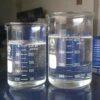
OEN CHEMICALS GMBH
Austria
Chemical Appearance Nonylphenol Polyoxyethylene (NP Series) has the appearance of a colourless liquid. Chemical Applications and Strengths Nonylphenol Polyoxyethylene (NP Series) is an extremely efficient chemical compound and therefore, has many industrial applications. Its main applications and strengths are: Nonylphenol Polyoxyethylene (NP Series) is most popularly used as a coating auxiliary agent. It is used as an electronic chemicals. It is also used as a leather auxiliary agent. It is used in the paper industry in the paper chemicals for the manufacturing of paper. It is used in the petroleum industry as a petroleum additive. It is used in the plastics industry as a plastic auxiliary agent. In the rubber industry Nonylphenol Polyoxyethylene is used as a rubber auxiliary agent. It is used as a commercially important nonionic surfactant. It is used in cleaning products like detergents.
Request for a quote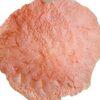
OEN CHEMICALS GMBH
Austria
Chemical appearance T – 610 has pinkish orange colour and comes in plaster of powder form. It is chemically stable and has no strong odour. It is sparingly dissolvable in water but very soluble within alkali solutions. Chemical application and strength T – 601 is a great collector which has excellent selectivity characteristics in the right conditions compared to that of SHA or SalicylHydroxamic Acid. It has the ability to form chemically stable chelate with copper, tin, iron, various rare earth minerals, copper, tungsten, and many more. But with alkali and earth metals, the T – 601 forms unstable chelate. Very soluble in water. Exhibits great selectivity characteristics in the flotation of select metal ores, particularly tin. It is always used along with P86 in the flotation process of tin.
Request for a quote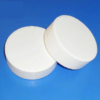
OEN CHEMICALS GMBH
Austria
Chemical appearance: Trichloroisocyanuric Acid is presented as white powder, tablets or granules TCCA is high soluble in water and other organic solvents. It is has a strong chlorine odor and is not safe for tasting Chemical application and strengths: The acid is an organic compound that works as a reagent in various organic synthesis processes. It is also a good bleaching agent. The compound is prepared from cyanuric acid when reacted with sodium hydroxide and chlorine gas. One of the major applications is its use as an algicide, disinfectant and bactericide in swimming pools. It prevents the growth of aquatic plants and undesirable bacteria especially for regularly used swimming pools. People use it in place of chlorine gas as it is easier to handle without getting exposed to the harmful fumes TCCA is also used in industrial water treatment facilities since it has high amounts of chlorine but it is easier to control and manage.
Request for a quote
OEN CHEMICALS GMBH
Austria
Chemical appearance Dithiophosphate BA or Ammonium Dibutyl Dithiophosphate has a white and pale greyish coloured appearance. It comes in a fine powder form which has no kind of odour. It has a PH level of 9. Chemical application and strength Dithiophosphate BA or Ammonium Dibutyl Dithiophosphate is a very good collector and flotation agent of nonferrous metallic minerals like copper, zinc sulfide (activated), silver, polymetallic ores, and lead. Its pH levels are ideal in the depressing process of iron pyrites. It has is a very strong collector compared to thiocarbamates and various secondary collectors. A good flotation agent and is quite selective within acidic environments. Dithiophosphate BA can be quite weak in collecting magnetizing pyrite and pyrite but is very selective It is a very good collector of galena and can enhance the separation of pyrite and galena.
Request for a quote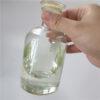
OEN CHEMICALS GMBH
Austria
CAS Number: 122-20-3 Other Trading Names: Tris (2-hydroxypropyl) amine Tri-2-propanolamine Tris (2-propanol) amine Type of Packaging : 215KG Steel Drums / 17.2 tons / 20ft Container Flexitank /23 Tons/ 20ft Container 1050 IBC Drum /21 Tons / 20 ft Container HS Code: 29221990
Request for a quote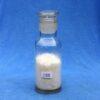
OEN CHEMICALS GMBH
Austria
Chemical appearance Ethyl Thiocarbamate or Sodium Diethyl Dithiocarbamate has a whitish to pale grey colour and comes in a crystal form. These crystals are easily soluble in water and produce no strong odour. Chemical application and strength Ethyl Thiocarbamate or Sodium Diethyl Dithiocarbamateis another strong type of collector which has characteristics of having strong collection and flotation ability. Compared to other dithiophosphages and xanthates, only a small dosage of it is required to become effective. Soluble not only in water and easily decomposes into carbon disulphide. Has weak collective power with regards to pyrites, but is very selective in the flotation process of various sulfide ores. When compared to dithiophosphates and xanthates, it is found to be more effective in the flotation process of zinc, lead, various polymetallic sulfide, and copper.
Request for a quote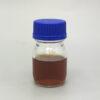
OEN CHEMICALS GMBH
Austria
Chemical appearance Sodium Thioglycolate or Sodium Mercaptoacetate has a light yellowish and sometimes dark color. It comes in a liquid form with a strong pungent odour and has a pH level between 7 to 11. Chemical application and strength Sodium Thioglycolate or Sodium Mercaptoacetate is a mining separator which is used mainly in the separation process of copper and molybdenum copper sulfide. It also acts as a galena inhibitor. It is also known as a powerful and effective depressant agent for copper sulfide which has gone through the separation process during considerable environment conditions. Great results are seen when this is used as a depressant instead of using sodium cyanide or sodium sulfide.
Request for a quote
OEN CHEMICALS GMBH
Austria
Propylene Glycol is an organic chemical. It is a very useful chemical substance which is industrially produced from propylene oxide. It is classified as a diol and its chemical formula is C3H8O2. Chemical Appearance Propylene Glycol has the appearance of a viscous and colourless liquid. It is nearly odourless and has a somewhat sweet taste. It is soluble in water, acetone, and chloroform. Chemical Applications and Strengths Propylene Glycol or Propane-1,2-Diol is an extremely useful chemical compound and therefore, has many industrial applications. Its main applications and strengths are: Propylene Glycol is most commonly used for the large-scale production of polymers. It is used as chemical raw material for the making of unsaturated polyester resins (UPR). It reacts with unsaturated maleic anhydride and isophthalic acid to form a copolyme
Request for a quote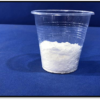
OEN CHEMICALS GMBH
Austria
Phthalic Anhydride is most commonly used for the large-scale production of plasticizers for plastics. It performs the useful functions of fillers for products such as paints, plastics, and textiles etc. It is used in the production of building material. It is utilised for making insulating material for protection from noise and cold etc. such as in homes and buildings. It is also consumed for making insulation for wires and electrical cables. In the chemical industry it acts as a modifier for chemicals. It is widely used for the efficient production of colourants. It is used for making dyes and pigments.
Request for a quoteResults for
Pharmaceuticals - Import exportNumber of results
138 ProductsCompany type
